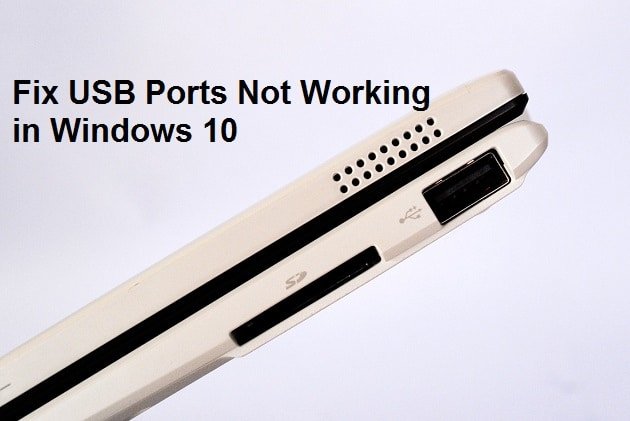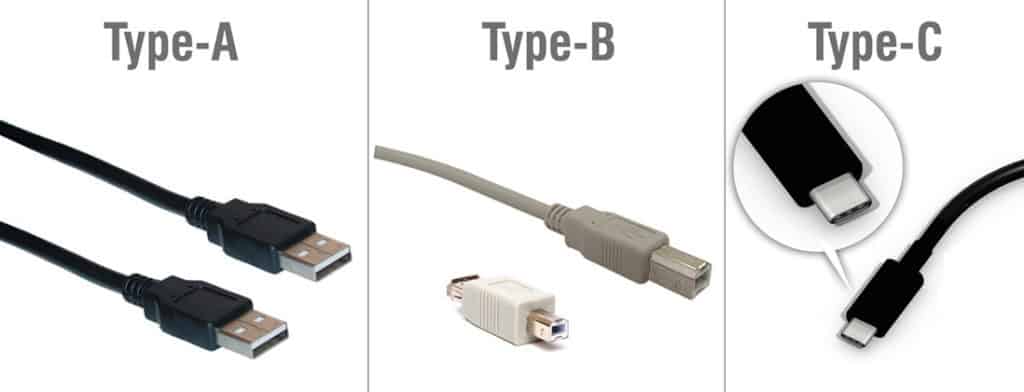The USB port is a standard cable connection interface for personal computers and consumer electronics devices. USB stands for Universal Serial Bus, an industry standard for short-distance digital data communication. USB ports allow USB devices to be connected to each other and transfer digital data over a USB cable. They can also supply power across cables to devices that need it.
Both wired and wireless versions of the USB standard exist, although only the wired version includes a USB port and cable.
How to plug in usb port ?
Many types of consumer electronics support USB interfaces. And these types of devices are most commonly used for computer networking :
- USB network adapter.
- USB broadband and cellular modems for Internet access.
- The USB printer is to be shared over the home network.
- USB drives are also sometimes used to copy files between devices, for file transfers from computer to computer without a network.
USB-A, USB-B, and USB-C port types –
There are several major types of physical layouts for USB ports –
- USB-A (Type A) : Rectangular USB Type-A connectors approximately 1.4 cm (9/16 in) in length and 0.65 cm (1/4 in) in height are commonly used for wired mice and keyboards. USB sticks normally also have USB-A connectors.
- USB-B (Type B) : Less common than Type A, USB B devices are roughly square in shape and commonly found on routers, computers, printers, and game consoles.
- Micro USB : So-called Micro USB versions of both USB-A and USB-B also exist – smaller versions than their original counterparts, popular on mobile devices. Older but now obsolete “Mini USB” versions can also be found on many older devices.
- USB Type C : With dimensions of 0.84 cm by 0.26 cm, this new standard is designed to replace both A and B with smaller ports to better support the thinner form factors of mobile devices.
To connect a device with one type of port per device to another, all you have to do is use the right type of cable with the appropriate interface at each end. USB cables are manufactured to support all kinds of supported combinations and male/female options.
Let’s see, how can we use the USB port ?
- Connect the two devices directly to a USB cable by plugging each end into a USB port.
Note – Some devices have more than one USB port, but do not plug both ends of a cable into the same device, as this can cause electrical damage!)
- You can plug the cable into a USB port at any time, regardless of whether the included devices are turned on or off.
3. Follow the instructions provided with your device before unplugging the USB cable. In some cases, unplugging the USB cable from a running device can damage the device or files being used on the computer. For this reason, it is always a good practice to safely eject your USB device before physically unplugging it.
4. Multiple USB devices can also be connected to each other using a USB hub. A USB hub plugs into a single USB port and has additional ports for other devices to connect to later. If using a USB hub, plug a different cable into each device and connect them to the hub individually.
How to fix USB port problems ?
When your USB ports suddenly stop working, the problem can always be tracked down to either a hardware or software failure. Some of these problems are the same across both Windows and Mac, while others are unique to just one or the other.
- Restart your computer. Sometimes you get lucky, and the easiest solution ends up fixing the biggest of problems.
- Look for debris in the USB port. These ports are wide open whenever you don’t have a device plugged in so it’s easy for debris, like dust or food, to get wedged inside.
If you see anything stuck inside, shut your computer down and gently remove the obstruction with a thin plastic or wooden implement like a toothpick.
In some cases, a product like canned air can be useful in blowing obstructions out of a USB port. Just be careful not to shove the obstruction further in.
- Check for loose or broken internal connections. One way to test this is to insert your USB device and then gently wiggle the connection. If it briefly connects and disconnects, then there is a physical problem with either the cable or the USB port.
If you feel a great deal of movement when you gently wiggle the USB connector, that indicates it may be bent or broken off the board. And while it is sometimes possible to fix this type of problem, you’re probably better off taking it to a professional.
- Try a different USB port. Many computers have more than one USB port, so a good way to rule out a single broken port is to unplug your USB device and try it in different ports.
Plug the USB device into a few of the ports on both the front and back of your computer. If the device doesn’t work in any of the ports, there’s likely a problem with its hardware.
If your device starts working when plugged into different ports, then the first port probably has a physical problem that needs to be fixed.
- Swap to a different USB cable. USB cable failures are more common than USB port failures, so make sure to swap in a different cable if you have one handy. If your device suddenly starts working, then you know that the problem was a broken wire inside the other cable.
- Plug your device into a different computer. If you have another computer or laptop handy, then try plugging your USB device into it. This is an easy way to rule out a problem with the device itself.
If your USB device springs to life the moment you plug it into your backup computer, then you know for sure that you’re dealing with a USB port problem.
- Try plugging in a different USB device. If you don’t have a spare computer, but you do have an extra flash drive laying around, or any other USB device, then try plugging that in before you move on to anything more complicated.
If your other device works just fine, then you’ll know that your ports are in good working order. In this case, you may need to fix or replace the device that failed to connect.
- Check the device manager (Windows). There are two things you can do with the device manager in Windows to get USB ports working again.
Scan for hardware changes by right-clicking the name of your computer, and then clicking on scan for hardware changes. When the scan to complete and then check your USB device to see if it works.
Another option is to disable and re-enable the USB controller. In the device manager, click the arrow next to the little USB cable so that it points down instead of to the right. Right-click on the first USB controller in the list and select Uninstall device. Repeat for each USB controller you find.
Turn your computer off and then back on again. Windows will automatically reinstall the USB controllers, so check to see if your device works.
- Reset the System Management Controller (Mac). If you have a Mac, resetting the system management controller (SMC) may fix your problem.
Resetting the SMC for Macs –
- Shut down the computer.
- Plug in the power adapter.
- Press and hold shift+control+option and then press the power button.
- Hold all four keys down for 10 seconds.
- Release the keys and power button all at the same time.
- Press the power button to turn on your Mac.
- When the Mac starts back up, the SMC will have reset.
- Check to see if your USB device works.
Resetting the SMC for iMac, Mac Pro, and Mac Mini –
- Shut down the computer.
- Unplug the power adapter.
- Press the power button and hold it for at least five seconds.
- Release the power button.
- Reconnect the power adapter and start the computer.
- Check to see if your USB device works.
- Update your system. Although less likely, there is a chance that updating your system could solve your USB port problems. This process is different depending on whether you’re checking for and installing Windows updates or updating macOS.
To update macOS on Mojave and later, click the Apple icon at the top left, and choose System Preferences > Software Update. Click Update Now if there’s one available.
On macOS on High Sierra and earlier, open the app store. Click Updates on the toolbar. If any updates are available, click on update or update all.
Restart your computer and check to see if your USB device works.
USB ports not working in windows 10 –
Method 1 : Run the Hardware and Devices Troubleshooter
- Press Windows Key + X and click Control Panel.
- Find Troubleshooting and click Troubleshoot.
- Next, click See All in the left pane.
- Click and run the Troubleshooter for Hardware and Devices.
- The above troubleshooter might be able to fix USB port not working in Windows 10.
Method 2 : Check if the device itself is faulty
It is now possible that the device you are trying to use is faulty and therefore unrecognizable by Windows. To verify that this is not the case, plug your USB device into another working PC and see if it is working. So if the device is working on another PC, then you can be sure that the problem is related to the USB port and we can continue with the next method.
Method 3 : Check Your Laptop’s Power Supply
If for some reason your laptop fails to power the USB port, it is possible that the USB ports may not work at all. To fix the problem with the laptop power supply, you will need to shut down your system completely. Then remove the power supply cable and then remove the battery from your laptop. Now hold down the Power button for 15-20 seconds, then insert the battery and connect the power supply. Turn on your system and check if you are able to fix USB port not working in Windows 10.
Method 4 : The USB port may be damaged
If none of the above methods solve your problem, then there is a possibility that your USB port may be damaged. You will need to take your laptop to a PC repair shop and ask them to check your USB port. If they are damaged, a repairman should replace the available USB ports at a fairly low cost.


